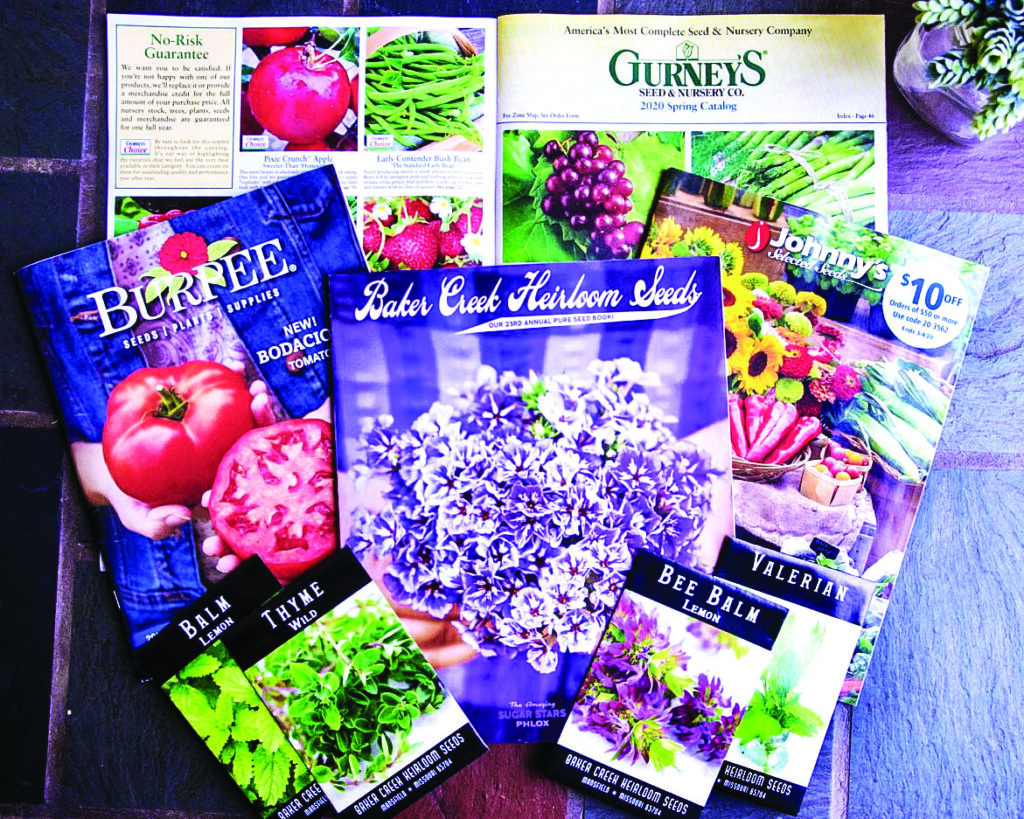
Gardeners are receiving a bumper harvest of seed catalogs in their mailboxes.
Nancy Edmonds Hanson
They’re in your mailbox, full of garden dreams – seed catalogs, the magical cure for gardeners’ winter doldrums. As the annual blizzard of seedy promise warms up the dismal daily harvest of post-Christmas bills, Minnesotans and their neighbors have begun crafting big plans for the growing season that still lies far ahead.
“Gardeners are like farmers,” horticulturist Randy Nelson observes. “No matter how disappointing last year turned out, we’re always optimists about what’s coming up.”
As the University of Minnesota Extension educator assigned to Clay County, Randy is something of a guru to gardeners in the region. As the COVID-19 pandemic drags on, he says, their numbers have blossomed: “People had to have something to get out of the house, and raising flowers and vegetables has been a great alternative,” he reports. “We saw a big increase in 2020, and it held steady last year. Once they’ve discovered it, there’s no reason those new gardeners won’t keep on going.”
Early indications are that he is right. Especially desirable varieties, he says, are already showing up as “sold out” on online sites. “My wife and I just got a reimbursement for a brilliant orange geranium that had caught our eye,” he notes sadly. “Sold out! In years gone by, you could order your seeds and get everything you wanted in February or even March. This year, if you haven’t already done it, get ready for some disappointments.”
As the county’s garden expert, Randy is already helping those with green thumbs (and otherwise) get their plots in order. He is conducting three seminars, the next on Feb. 1 and 3 in conjunction with Moorhead and Hawley Continuing Education. That session covers just what his audience needs to know now: successful seed starting at home. Like the rest of his classes this spring, they will be conducted online via Zoom. “There’s no reason to do it in person right now. This gets us out to more students,” he says. Not only that; since a good share of gardeners are in the vulnerable age groups, Zooming keeps them healthy for the outdoor tasks ahead.
He plans sessions on two more topics. On March 7 and 8, he will cover tips for home lawn care, including mowing, fertilizing and watering the turf still dormant under the snow. Tree planting and maintenance is coming up April 4 and 5. to register for any of Randy’s webinars, go to extension.umn.edu/courses-and-events.
As an educator with Clay County’s Extension Service office, Randy practices what he preaches. He grew up in the garden at Nelson, Minnesota, with his mother and grandmother. After earning a bachelor’s degree in horticulture and plant industry management from the University of Minnesota – Crookston and a master’s in horticulture from North Dakota State University, he worked in sugarbeet research at NDSU for four years before joining Clay County 14 years ago.
He and his wife Anne, both avid gardeners, live 10 miles north of Moorhead with their four children. Gardens are the most prominent feature of their farmstead. They plant, nurture and harvest vegetables from 18 raised beds of soil, each 30 feet long. His two oldest kids, both in college, are occupied elsewhere but help pick grapes and cherries when the time is right. Their youngest daughter, 12, adores tomatoes and hot pepper, while the 15-year-old loves garden peas. “We have plenty of help,” he reveals.
Like many of his students, Randy is getting ready to start seedlings in the shelter of his home – the laundry room, to be exact, where two deep four-foot shelves each accommodate five greenhouse trays of soil and seeds. He rotates the seedlings from end to end under banks of LED lights. Fluorescents were wonderful, he says, “but the LEDs are even better.” They’re less expensive to operate and, as prices have come down, have become equally affordable.
He’ll plant his (not orange) geraniums on Valentine’s Day, along with starting onions.
Randy counsels his classes to maintain some perspective when they’re drooling over the catalogs’ offerings. “Up here, it’s important to look at the number of days until harvest. “Plants growing in cooler climates generally take longer to mature than the descriptions suggest,” he reports. Peppers and petunias go into the soil in mid-March. Tomatoes – predominantly his wife’s favorite Juliet variety, with their elongated 2-ounce fruits – begin in mid-April, and cucumbers and cantaloupe are seeded in May.
Along with their love of fresh vegetables, the Nelsons also favor winter-hardy fruit. Several varieties of apples, plums and Saskatchewan-bred cherries flourish on their acreage.
Last year, he concedes, was not the best, either for pandemic-era newbie gardeners or old pros like himself: “The heat caused plants to blossom and fade in a day. It interfered with pollination. And I’ve never seen spider mites proliferate like they did in 2021. They love heat and drought, and that’s exactly what they got.” They attacked his vine crops and even his onions. “When we get normal rain, microorganisms on the foliage normally control the mites and fungi,” he explains, adding that he doesn’t like spraying insecticides.
His best advice for the summer ahead? “Order your seeds right now if you want specific varieties. They’re going fast.”
And look forward to fine days ahead, says the horticulturist with that gardener’s perennial optimism, He explains: “No matter if last year was the worst one ever … by the time those seed catalogs come around, you’re looking forward to a great season ahead.”


